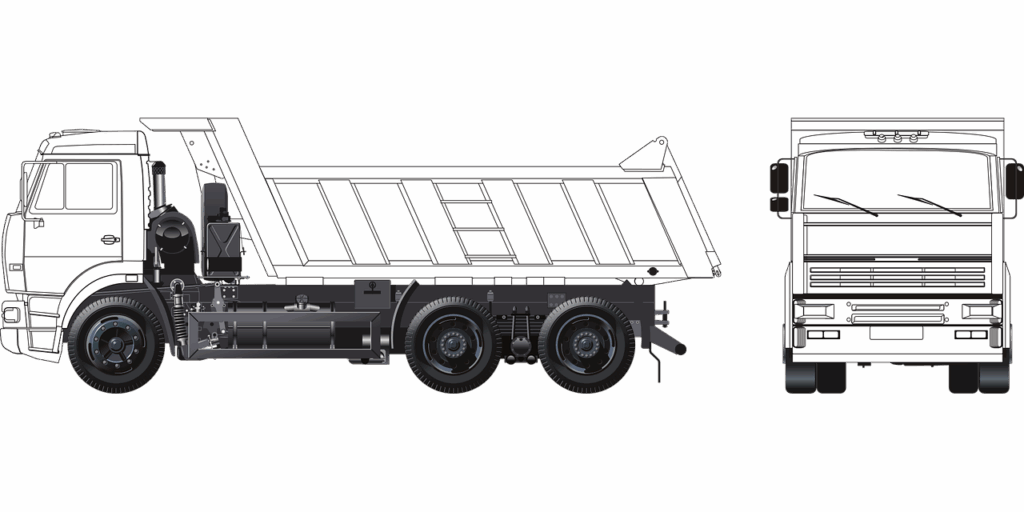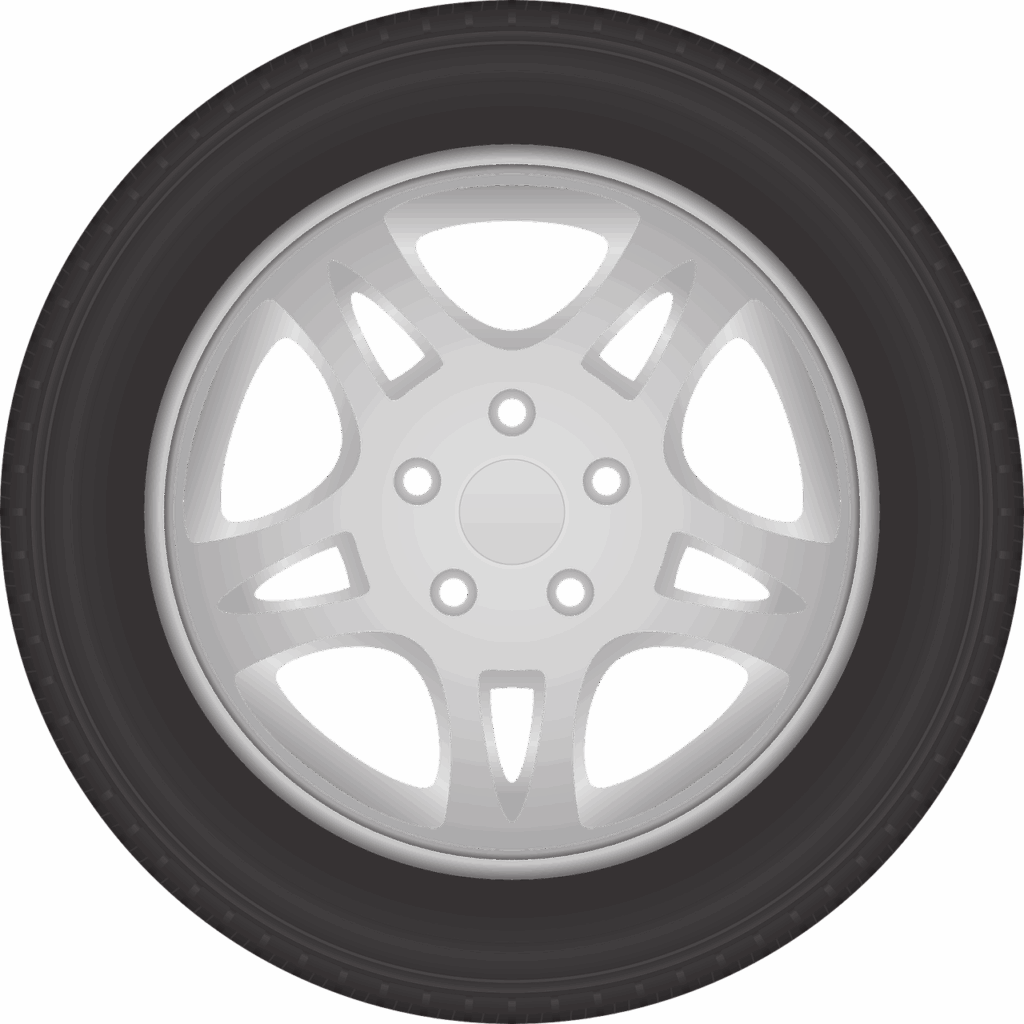
Driving in challenging weather conditions can often feel like a battle against the elements, and while most motorists readily acknowledge the dangers of rain, snow, or ice, the insidious threat of high winds is frequently overlooked. This silent adversary, however, poses a significant and sometimes deadly hazard on our roads. Imagine being behind the wheel, your vehicle suddenly buffeted by an invisible force, causing it to swerve, sway, or even feel on the verge of tipping over. It’s a frightening scenario that, unfortunately, many drivers encounter more often than they realize.
The statistics underscore this often-underestimated danger. A Weather.gov report highlights that high winds have contributed to roughly 50 deaths per year since 2016, a sobering figure that demands our attention. Furthermore, research conducted by the Federal Highway Administration indicates that over a million car wrecks annually are weather-related, with fast wind speeds playing a considerable role in these incidents. High winds don’t just push your vehicle around; they can significantly decrease visibility by kicking up dirt and debris, lower your car’s stability and grip on the road, increase the risk of accidents due to unpredictable traffic speed changes, and even put you at risk from large items, trees, or power lines blown into your path.
As seasoned mechanics and automotive enthusiasts, our aim is to equip you with the knowledge and practical skills necessary to confidently navigate these gusty conditions. We want you to be well-prepared and maintain control, even when the wind decides to put your driving abilities to the test. Let’s delve into some crucial tips that will empower you to keep your car stable and your journey safe, without falling prey to common pitfalls like overcorrecting the steering.
1. **Check the Weather and Plan Ahead for Gusty Conditions**
The most effective way to ensure your safety when facing high winds is often to avoid them altogether. Proactive planning begins long before you even turn the ignition. Before embarking on any trip, especially a longer journey, make it a habit to meticulously check the weather forecast. Don’t just look for rain or snow; actively seek out warnings for high winds or poor visibility, as meteorologists issue high wind warnings when sustained winds of 40 mph or higher, or gusts over 58 mph, are expected.
It’s crucial to examine weather advisories not only for your departure point but also along your entire route and at your final destination. If you anticipate windy conditions upon arrival, take additional precautions, such as planning to park away from potential hazards like trees and power lines if possible. The objective is to plan your trip to bypass severe weather whenever it’s feasible, even if it means adjusting your departure time or rescheduling your journey entirely. Your safety is always worth the inconvenience.
In situations where high winds, typically around 40 mph or more, are predicted for your area, the advice is clear: do not travel unless it’s an emergency. Emergency travel is strictly defined as seeking medical assistance or escaping a dangerous situation, not for routine errands or social engagements. If your travel takes you through regions known for high winds, like the ‘tornado alley’ states such as Texas, Oklahoma, or Kansas, advanced planning is even more critical. Utilize resources like 511 (which may vary by province) or weather apps for real-time alerts and guidance.
Beyond checking the forecast, proper preparation for potential roadside emergencies in stormy conditions is a non-negotiable step. Ensure your vehicle is equipped with essentials like a spare tire and puncture repair kit, a mobile phone car charger, warm clothing and blankets, a first aid kit, and a torch with extra batteries. Being stranded in a windstorm is a serious situation, and having these items can make a significant difference in your comfort and safety until conditions improve or help arrives. Remember, avoiding unnecessary driving, particularly on open highways or bridges during a high wind warning, is paramount.

2. **Understand Your Vehicle’s Vulnerability to Crosswinds**
Every vehicle behaves differently in high winds, and understanding your car’s specific characteristics is fundamental to safe driving. While smaller vehicles might seem easier to maneuver, they often possess less stability against strong gusts. Conversely, larger, heavier vehicles, while less likely to be ‘blown around,’ can be much harder to control due to their increased surface area and higher center of gravity, making them particularly susceptible to tipping over. This is especially true for ‘high-profile’ vehicles such as large trucks, SUVs, RVs, moving vans, and vehicles with rooftop cargo carriers.
The impact of strong winds on larger vehicles is a well-documented phenomenon. Their expansive, flat sides act much like sails, effectively harnessing the wind’s power, albeit uncontrollably. Research indicates that a wind direction angle of 120 degrees has the greatest impact on vehicle stability, causing significant lateral displacement and yaw angle. In extreme cases, gusts around 50 mph have been known to blow trucks completely sideways. This illustrates why extreme caution and defensive driving are imperative when you find yourself near these high-profile vehicles, particularly on highways or freeways where crosswinds can be intense and lead to dangerous rollover accidents.
Small sports coupes, with their aerodynamic designs, are generally the most stable vehicles in windy conditions, allowing the wind to pass over them with minimal resistance. However, for everyone else, whether you’re in a 4×4, a saloon, or especially a truck, bus, or motorcycle, acknowledging your vehicle’s inherent vulnerabilities is key. For example, motorcyclists face such extreme risks that avoiding travel in windy conditions altogether is strongly recommended. Even a slight gust can severely affect a bike’s handling and balance, with devastating consequences if a crash occurs.
Scientific studies further clarify this, showing that while a heavier vehicle might theoretically offer better resistance due to increased inertia, a vehicle’s frontal area and the height of its center of gravity play a more dominant role in determining crosswind stability. Mid-size SUVs, for instance, exhibit significantly greater lateral displacement and yaw angle compared to compact SUVs under the same wind conditions, primarily due to their larger frontal area and higher center of gravity. This underscores the need for enhanced stability control measures for larger vehicles and for all drivers to be acutely aware of their vehicle’s specific responses to wind.

3. **Reduce Your Speed for Enhanced Control**
One of the most immediate and impactful actions you can take when driving in high winds is to significantly reduce your speed. It’s a fundamental principle of physics that the faster your vehicle is traveling, the more profoundly it will be affected by sudden gusts and shifting wind conditions. High speeds amplify the destabilizing effects of crosswinds, diminishing your overall driving stability and control, and reducing the precious time you have to react to unexpected movements or flying debris.
When a sudden gust hits your car, traveling at a reduced speed allows you more precious seconds to process the situation and make a measured response, rather than a panicked one. This increased reaction time can be the difference between maintaining control and losing it entirely. On highways, where speed limits are higher, the danger from strong winds becomes even more pronounced. Therefore, it’s advisable to travel slower than the posted speed limit, moving into the right lane if you’re not already there, to provide a safer buffer for yourself and other drivers.
Wind gusts are unpredictable; they come in short, intense bursts that can catch any driver off guard. Trying to ‘power through’ them at your normal cruising speed is a dangerous gamble. Instead, by slowing down, you grant your vehicle a better grip on the road and yourself a greater capacity to counter the forces of the wind. This practice significantly reduces the chances of your vehicle being pushed off course or experiencing a loss of control, especially when combined with other safe driving techniques.
The scientific data from real-world simulations corroborates this advice, showing a direct correlation between vehicle speed and instability. Both lateral displacement (how far your vehicle is pushed sideways) and yaw angle (how much your vehicle rotates around its vertical axis) increase dramatically with higher vehicle speeds, even under constant wind conditions. For instance, a compact SUV traveling at 120 km/h experiences significantly greater lateral displacement and yaw angle compared to the same vehicle at 60 km/h. This concrete evidence reinforces that slowing down is not just a suggestion, but an essential action for ensuring driving safety in windy environments, particularly on roads prone to additional challenges like sand accumulation.
Read more about: 12 New Cars Named ‘Best Buys’ for 2025: An Expert Guide for Savvy Shoppers
4. **Maintain a Generous Safe Following Distance**
In any driving condition, maintaining a safe following distance is critical, but in high winds, it transcends importance and becomes an absolute necessity for preventing accidents. The unpredictable nature of wind means that both your vehicle and others around you could suddenly swerve or drift without warning. Giving yourself ample space translates directly into more reaction time, which is invaluable when faced with such sudden, wind-induced movements.
Under ideal weather conditions, a three-second following distance is generally recommended. However, when adverse conditions like high winds prevail, this distance must be extended significantly, ideally to at least five to eight seconds. This extended buffer provides you with the crucial margin needed to react if the vehicle ahead loses control due due to a powerful gust or if another weather-related incident occurs in front of you, potentially giving you the space to brake safely or maneuver around an obstruction.
Strong gusts can unexpectedly impact your braking efficiency and increase your stopping distance, further highlighting the need for this extra space. It’s not just about avoiding hitting the car in front of you if it slows down; it’s also about having the physical room to respond to any lateral shifts or swerving that might occur from any vehicle, including your own, being pushed by the wind. Think of this increased following distance as your personal safety bubble, providing a critical buffer zone in a highly dynamic and unpredictable environment.
By consciously increasing the gap between your vehicle and others, you are actively reducing the chances of a chain-reaction collision in an environment where control can be momentarily compromised. This defensive driving technique acknowledges the enhanced risks posed by high winds and provides a practical, actionable step to mitigate them, ensuring that you have the maximum opportunity to react safely and maintain peace of mind behind the wheel, even when the air around you is turbulent.
Read more about: Smart Choices for the Golden Years: 12 Top SUVs Retirees Should Consider Buying in 2025
5. **Keep a Firm and Correct Grip on the Steering Wheel**
While maintaining a firm grip on the steering wheel should be standard practice for any driver, it becomes absolutely vital when navigating through high winds. A sudden, unexpected gust has the potential to rip the wheel from a relaxed grip, or at least cause a momentary loss of control that could escalate into a dangerous situation in mere seconds. This is why it’s not just about holding the wheel, but holding it correctly and with intention, ensuring you’re ready for whatever the wind throws at you.
The classic ‘ten and two’ or ‘nine and three’ o’clock hand positions, imagining the steering wheel as a clock face, are recommended for a reason. These positions provide optimal leverage and control, allowing you to react quickly and solidly to sudden forces acting on your vehicle. It might seem like a small detail, but the ability to apply immediate, decisive counter-steering input when a heavy gust hits can make all the difference in keeping your vehicle tracking straight and true.
In windy conditions, distractions become even more hazardous. Avoid the temptation to take even one hand off the wheel to adjust your climate control, change the radio station, or interact with your phone. A single moment of inattention, combined with an unforeseen gust, can instantly create a very precarious situation. New drivers and teenagers, in particular, who may be more prone to such distractions, must internalize this safety tip as a non-negotiable rule. Both hands on the wheel, firmly gripping, ready to respond, is the mantra for safe windy-weather driving.
This firm grip isn’t about muscling the wheel into submission, but rather about being connected to your vehicle’s responses and prepared to provide gentle, yet firm, corrections. It allows you to feel the subtle shifts as the wind interacts with your car and gives you the leverage to make controlled adjustments, preventing the wind from dictating your vehicle’s path. Ultimately, a proper, firm grip provides a crucial layer of control and confidence, enabling you to react effectively and maintain your course when gusts threaten to push you off track.
Read more about: Unleashing Performance, Ensuring Protection: 12 Sports Cars Where Speed Meets Stellar Safety Ratings

6. **Avoid the Peril of Overcorrecting Your Steering**
One of the most dangerous, yet common, mistakes drivers make when their vehicles are affected by wind gusts is overcorrecting. It’s a natural, almost instinctive, panic reaction: a sudden gust pushes your car, say, to the left out of its lane, and your immediate impulse is to yank the steering wheel sharply back to the right to regain your lane. However, this sudden, drastic overcorrection can be far more perilous than the initial gust itself, often leading to a loss of control, especially if the wind abruptly changes direction or lessens its intensity.
Instead of making dramatic, knee-jerk adjustments, the key is to react slowly and steadily, maintaining a calm and focused demeanor. Your car is designed to handle a certain amount of movement, and remaining composed allows you to make extremely small and gradual corrections to keep your vehicle centered in its lane. Panicking and overreacting can introduce instability that the wind alone might not have caused, potentially initiating a dangerous oscillation or swerve that’s difficult to recover from.
Drivers need to be particularly mindful of this advice in areas prone to sudden crosswinds, such as bridges, freeway overpasses, or stretches of road between tunnels. In these zones, anticipate that your vehicle might be pushed, and be prepared to make gentle, continuous adjustments – small turns of the wheel or slight speed reductions – to maintain your intended path. The goal is to ‘drive through’ the gust with subtle counter-inputs, rather than fighting it with aggressive steering.
Think of it as a delicate dance rather than a wrestling match. When the wind attempts to push you, gently guide your vehicle back without introducing excessive force. If you overcorrect, and then the gust suddenly dies down, you’ll find yourself steering hard into the opposing lane without the wind’s resistance to balance your input, leading to an uncontrolled swerve. By remaining calm, focused, and implementing small, gradual corrections, you will find that your car responds much more predictably, allowing you to navigate even significant gusts with greater safety and confidence. This nuanced approach to steering control is fundamental to stability in windy conditions.
Read more about: 18 Dangerous Winter Driving Mistakes You Must Avoid

7. **Anticipate Sudden Gusts and High-Wind Corridors**
While maintaining a steady course in consistent wind is one challenge, the truly insidious threat often comes from sudden, unpredictable gusts. These bursts of wind can strike without warning, catching even the most experienced drivers off guard and potentially causing immediate instability. Rather than reacting purely after the fact, a proactive approach involves anticipating where these gusts are most likely to occur.
Certain geographical features and man-made structures are notorious for creating ‘high-wind corridors’ where crosswinds can intensify dramatically. Bridges, freeway overpasses, and the gaps between tunnels are prime examples. As your vehicle transitions from a sheltered area to an open, exposed one, it can suddenly be hit by a powerful side wind, causing it to lurch. Being prepared for these transitions is crucial for maintaining control and avoiding panic.
The scientific understanding of wind dynamics supports this proactive stance. Research indicates that a wind direction angle of 120 degrees has the greatest impact on vehicle stability, causing significant lateral displacement and yaw angle. Knowing this, drivers should approach these vulnerable zones with heightened awareness, reducing speed significantly *before* entering them. This pre-emptive action grants you more time to process the situation and make the small, gentle corrections necessary to counteract the wind’s force, rather than battling an unexpected onslaught.
By deliberately slowing down and preparing for impact, you transform a potentially frightening surprise into a manageable driving scenario. This allows you to ‘drive through’ the gust with subtle counter-inputs, preventing the wind from dictating your vehicle’s path. Ultimately, anticipating these moments is a cornerstone of defensive driving in challenging wind conditions, helping you to remain calm, focused, and in command.
8. **Exercise Extreme Caution When Overtaking High-Profile Vehicles**
Sharing the road with larger vehicles, particularly high-profile ones like semi-trucks, commercial vans, RVs, and even large SUVs, demands an elevated level of vigilance, especially on windy days. These vehicles, by their very design, present a much larger surface area to the wind, effectively turning their long sides into giant sails. This makes them exceptionally prone to being buffeted, swayed, or even pushed off course by strong gusts and crosswinds.
The danger is not theoretical; studies show that gusts around 50 mph have been known to blow trucks completely sideways. When you are driving alongside or attempting to overtake such a vehicle, you are exposed to two distinct hazards. First, the large vehicle itself might suddenly swerve into your lane due to a powerful gust. Second, as you pull out from behind or alongside a large truck or bus, you lose the temporary windbreak it provided, suddenly exposing your vehicle to the full force of the wind, much like exiting a tunnel.
Therefore, the advice is clear: exercise extreme caution and practice defensive driving when near these high-profile vehicles. When overtaking, give them a wide berth, staying as far away as possible to provide a crucial safety zone. This significantly reduces the risk of being involved in a collision if they are suddenly pushed off course or even topple over. Remember, the devastating consequences of a large vehicle rolling onto your car are a compelling reason for this expanded safety margin.
This same principle extends to motorcycles and cyclists. They are far more susceptible to even slight gusts, which can severely affect their balance and handling. When overtaking them, maintain an even greater distance and anticipate that they might be unexpectedly pushed into your path. Approaching the situation as if you are exiting a sheltered area and entering a strong crosswind zone will help you prepare for the sudden impact of the wind and manage your own vehicle’s response.
9. **Stay Vigilant for Road Debris and Falling Objects**
High winds don’t just affect your vehicle’s stability; they transform the entire road environment into a dynamic and potentially dangerous landscape. One of the most immediate and tangible threats comes from flying or falling debris. Your visibility can be drastically decreased by dirt, leaves, and trash being blown across the road and into your view, creating a constant need for heightened awareness.
Beyond mere visibility, the physical impact of debris poses a significant risk. Wind can pick up and hurl smaller items like plastic bags and cardboard, but also heavier, more damaging objects. In rural or forested areas, the danger escalates considerably, as branches and even entire trees can be blown down and into the road. This is especially perilous at night or in foggy conditions when these obstructions are hard to notice, potentially leading to severe injuries if hit at high speed.
Your vigilance should extend beyond the immediate road surface. Keep an eye out for potential hazards that could detach from structures or natural elements. This includes falling roof tiles from buildings, electricity poles, or anything else that might be dislodged by powerful gusts. If you observe any tree or branch overhanging the road, it’s prudent to try and avoid traveling directly underneath it, if safely possible.
To mitigate these risks, slow down significantly to give yourself more time to spot and react to debris. Turn on your headlights, even during the day, to improve your vehicle’s visibility to others and to help illuminate objects on the road. If conditions become extreme, with heavy debris impacting visibility, consider turning on your emergency lights (hazard lights) and safely pulling over to let the wind and debris pass. Your safety is paramount, and waiting out the worst of the storm is often the wisest course of action.
Read more about: Mastering the Dark: Driving Pro’s Essential Guide to Enhancing Night Driving Visibility with Easy, Actionable Adjustments for Every Driver
10. **Ensure Your Tires Are in Optimal Condition**
Your vehicle’s tires are the sole point of contact with the road, making their condition absolutely paramount for maintaining stability, especially when battling high winds. They are your first line of defense against being pushed off course, providing the critical grip and traction needed to counteract lateral forces and execute precise steering corrections. Without healthy tires, even the most advanced stability systems will struggle to perform effectively.
Tires that are worn, underinflated, or otherwise compromised cannot provide the necessary adhesion to the road surface. If your tires are close to or below the legal minimum tread level, their ability to channel water or provide bite on uneven surfaces is severely diminished, which can lead to increased slippage and greater vehicle movement from wind gusts. Similarly, incorrect tire pressure can affect the tire’s contact patch and overall responsiveness, making the vehicle feel less stable and harder to control.
Therefore, it is not merely a suggestion but an imperative to regularly check your tires for proper inflation and adequate tread depth. Before embarking on any journey, particularly one where windy conditions are anticipated, take a few moments to inspect them. Better yet, have your vehicle professionally inspected by a trusted auto mechanic. They can assess everything from tread wear to tire pressure and overall integrity, ensuring your tires are ready to handle the increased demands of gusty weather.
Optimal tire condition directly contributes to your vehicle’s ability to resist the lateral aerodynamic force and yawing moment that high winds exert. When the grip is maximized, your vehicle is better equipped to manage lateral displacement and control its yaw angle, particularly under the demanding conditions of high wind speeds and swift vehicle movement. Investing in good tire maintenance is a small effort that yields monumental returns in safety and confidence behind the wheel.
Read more about: Mechanics’ Top Frustrations: 14 Bad Car Habits You Need to Stop Now to Save Money and Your Vehicle’s Life
11. **Utilize Modern Vehicle Safety Features**
While skilled driving techniques remain the bedrock of safe navigation in high winds, modern vehicle technology offers an invaluable layer of assistance. Today’s cars are increasingly equipped with sophisticated safety features designed to enhance stability and driver awareness, which can be particularly beneficial when battling unpredictable gusts. It’s crucial to understand what these features do and how they can quietly work in your favor.
Electronic Stability Control (ESC) is one such cornerstone technology. It actively monitors your steering angle, wheel speed, and vehicle yaw rate, intervening when it detects a loss of traction or control. In the event of a sudden wind gust causing your car to slide or veer, ESC can automatically apply individual brakes and/or reduce engine power to help maintain traction and keep your vehicle on its intended path, making a world of difference in preventing skids.
Other advanced driver-assistance systems (ADAS) further bolster your defenses. Lane-Keeping Assist, for instance, can alert you or even gently correct your steering if a strong wind pushes your vehicle out of its lane. Blind Spot Monitoring, by providing alerts about vehicles in your blind spots, becomes exceptionally helpful when adjacent cars might also be shifting erratically due to wind, ensuring you’re aware of their movements.
Adaptive Cruise Control, while not directly addressing wind stability, can indirectly contribute to safer driving in gusty conditions by helping you maintain a safe and consistent following distance from other vehicles. It automatically adjusts your speed based on traffic flow, reducing the need for constant manual adjustments and allowing you to focus more intently on steering and anticipating wind effects. Leveraging these technologies doesn’t replace careful driving; it augments it, giving you more tools to stay calm and safe.
Read more about: Buyer’s Alert: 7 SUVs Prone to Major Breakdowns Before Hitting 80,000 Miles

12. **Know When and Where to Safely Pull Over**
Despite all precautions and advanced vehicle features, there comes a point when the conditions become simply too dangerous to continue driving. If you find yourself struggling significantly to maintain control, if visibility is severely compromised by blowing debris, or if your gut instinct tells you the situation is dicey, the most responsible and safest action you can take is to pull over and wait for the high winds to subside. Your arrival time is secondary to your safety.
However, choosing *where* to pull over is as crucial as the decision to stop. Avoid pulling onto a busy freeway shoulder if other options exist. This can expose you to significant risk if another vehicle, also struggling with the wind, loses control and collides with yours. Ideally, you should exit the highway entirely and seek refuge in a parking lot, a quiet side street, or any sheltered area that provides a safe distance from active traffic.
Once safely off the road, engage your parking brake, turn on your headlights, and if visibility is poor, activate your emergency flashers. Stay informed by checking weather updates on your phone to gauge when conditions are expected to improve. Remember, remaining inside your vehicle is generally the safest course of action, as it offers protection from flying debris and the direct force of the wind.
Finally, be mindful of where you park. Never stop or park near cliff edges, ditches, or directly underneath trees or large power poles, as these can become falling hazards during severe windstorms. Even when exiting your vehicle, be extremely cautious; a sudden gust can cause you to lose balance or violently slam a car door, potentially causing injury. Patience and prudent decision-making are your best allies in these challenging moments, ensuring you can eventually resume your journey with confidence.
Read more about: Mechanics’ Top Frustrations: 14 Bad Car Habits You Need to Stop Now to Save Money and Your Vehicle’s Life
Navigating the unpredictable forces of high winds on the road demands a blend of preparedness, practical skills, and a healthy respect for the elements. By internalizing these comprehensive strategies—from diligent pre-trip planning and understanding your vehicle’s unique dynamics to mastering nuanced steering inputs and leveraging cutting-edge automotive technology—you empower yourself to face gusty conditions with assurance. Remember, the goal isn’t just to reach your destination, but to do so safely and with peace of mind, knowing you’ve taken every possible measure to remain stable and in control, no matter how much the wind howls.









